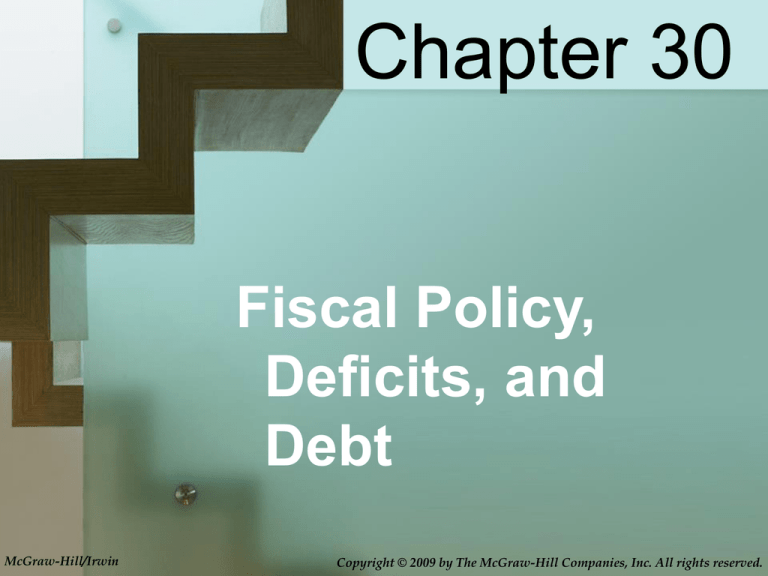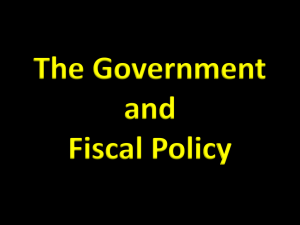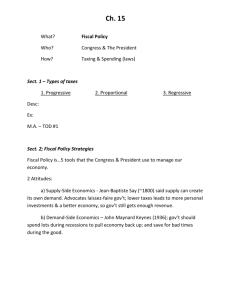
Chapter 30
Fiscal Policy,
Deficits, and
Debt
McGraw-Hill/Irwin
Copyright © 2009 by The McGraw-Hill Companies, Inc. All rights reserved.
Chapter Objectives
• Purposes, tools, and limitations of
fiscal policy
• Built-in stabilizers and the business
cycle
• The standardized budget and U.S.
fiscal policy
• U.S. public debt
30-2
Fiscal Policy
• Council of Economic Advisers
(CEA)
• Discretionary fiscal policy
–Eliminate recessionary or
inflationary gap
–Countercyclical
• Nondiscretionary fiscal policy
–Passive or automatic
30-3
Fiscal Policy
• Expansionary fiscal policy
–Increased spending and/or lower
taxes
–Budget deficit
• Contractionary fiscal policy
–Lower spending and/or higher
taxes
–Budget surplus
• Policy options?
30-4
Expansionary Fiscal Policy
Recessions
Decrease
Aggregate
Demand
Price Level
$5 Billion
Additional
Spending
AS
Full $20 Billion
Increase in
Aggregate Demand
P1
AD1
AD2
$490
$510
Real Domestic Output, GDP
30-5
Contractionary Fiscal Policy
Reduce
Demand Pull
Inflation
$5 Billion
Initial Decrease
In Spending
Price Level
AS
Full $20 Billion
Decrease in
Aggregate Demand
P1
AD4
AD3
$510
$522
Real Domestic Output, GDP
30-6
Built-In Stability
• Automatic stabilizers
–Taxes and transfers
• Economic importance
• Tax progressivity
–Progressive tax system
–Proportional tax system
–Regressive tax system
30-7
Standardized Budget Balance
Percentage of Potential GDP, 2007
-6
Deficits
-4
-2
0
Surpluses
2
4
6
Denmark
New Zealand
Ireland
Canada
Norway
France
United States
United Kingdom
Japan
Source: Organization for Economic Cooperation and Development
30-8
Federal Budget Balance
Actual and Projected, Fiscal 1994-2014
Actual
Projected
(as of March 2008)
Budget Deficit (-) or Surplus, Billions
$300
200
100
0
-100
-200
-300
-400
-500
1994 1996 1998 2000 2002 2004 2006 2008 2010 2012 2014
Source: Congressional Budget Office
30-9






